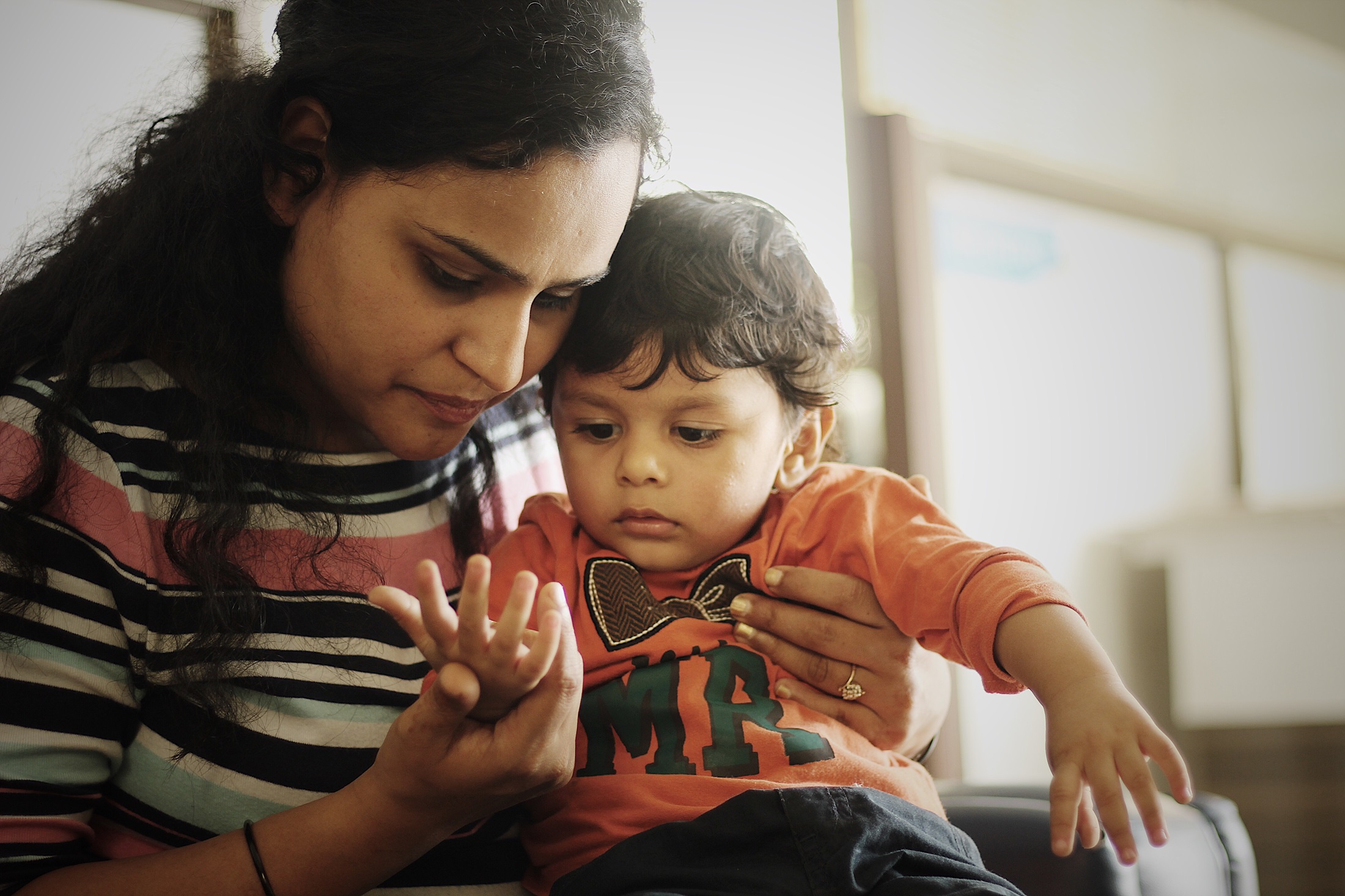Self-Care for Parents of Young Children
As a parent of young children, you have a huge amount of responsibility on your shoulders. Not only do you […]
Read complete blog >>
One of the ways to better understand the workings of psychotherapy involves the reading of case studies. A case study outlines the process of therapy in a descriptive way. Below is a therapy case study written from the perspective of a psychodynamic psychotherapist. Names have been changed to ensure anonymity and permission was granted by the client to publish the article.
Lila, an attractive and articulate 33-year-old South-East Asian woman, is a mix of soft brown eyes and a don’t-mess-with-me attitude. Wearing elegant attire and sporting a sternum tattoo, she settled her petite figure into my office chair and explained that she’d been seeing a guy with commitment issues for three years. They had met at work. She was cautioned against Omar, but felt irresistibly drawn to him. He was clear from the outset that he ended contact with sexual partners if they developed feelings towards him. In response to this, Lila convinced herself that she did not need the girlfriend title and did not plan on catching feelings. She was clearly adept at rationalization, I thought to myself.
The relationship was primarily sexual to begin with and they would meet intermittently. Over time, contact became more regular and was almost always initiated by Omar. He would call and Lila would come running. She voluntarily began to do his laundry, iron his clothes, and clean his apartment during her visits. This was uncharacteristic behavior, she told me, and made it clear that she would not have performed these tasks if he had asked her to. To complicate matters, he had introduced her to a variety of illegal substances. These included crystal meth, MDMA and cannabis. I was surprised at this disclosure given the drug policy in the UAE. I was further surprised to hear that Lila had no significant drug history prior to meeting Omar and that she preferred alcohol. This was soon to change as they settled on hashish as their substance of preference.
If caught by the police in possession of illegal substances, one is asked to provide the names of other users or risk even more severe consequences. An unidentified person known to the two must have found themselves in this position and volunteered their names. Lila was fast asleep when Omar’s apartment was raided by the Criminal Investigation Division. They found the hashish stash and both were arrested. Omar graciously took the rap and was charged with cannabis procurement, facilitation, and use. Lila was prosecuted for the lesser crime of substance use.
Lila was graced with two strokes of good fortune. The UAE was revising its legal position on cannabis, and her ex-boss offered to pay for legal representation. She was released after spending 11 days in prison and had been waiting five months for her sentence to be passed when we first met. Omar was less lucky and awaiting his sentencing in prison. Perturbed by the possibility of her lover receiving a life sentence, Lila made a police statement declaring that she had sourced her own cannabis. She hoped that this would grant him judicial leniency. This also meant that she was adding procurement to her charge sheet.
Lila was risking her freedom for a partner who was ostensibly only interested in a casual liaison. The dice rolled in her favor. She was sentenced to a fine of 10 000 dirhams and deportation to her country of origin. No deportation date had been set by the court and she was waiting for the outcome of Omar’s trial before surrendering herself to the authorities. Her life was on hold. She was depressed, anxiety-ridden, unemployed, unable to work, passport-less, and without a bank account. And yet she felt obliged to remain in this state of limbo for someone who was clearly disinterested in a committed relationship. Lila was perplexed at her own behavior. She knew that Omar was no good for her, but felt unable to leave the relationship. She was stuck.
What was the allure of this man, I wondered, and asked her to elaborate on their relationship. Omar originated from a neighboring Arab country, was 10 years older, unmarried, less well educated, and did not earn as much as she did. Not an amazing catch, I thought, especially given that there had been a number of other suitors. Cannabis played a central role in their relationship. They would get stoned, have intense conversations, and engage in sexual activities, after which she would read while he gamed. Although substances often quickly deepen interpersonal connection, this seemed insufficient to explain her level of commitment to Omar. Wanting to better understand Lila’s relationship dynamics, I asked her about previous significant relationships.
Her first sexual relationship was at 16 and lasted for six years. Her boyfriend cheated on her after three years and ended the relationship. Lila described feeling as if she was going to die. She responded to the loss with a single-minded aim of re-capture and became the crazy ex. Lila would call him 60 times a day, cry, beg, and stalk him at his university lectures. She desperately wanted what she had lost. On one occasion, she mistakenly identified him on a passing public bus. In a display of impulsive desperation, she threw her college textbooks to friends and ran after the bus in the pelting rain. It took one year of persistent pursuit to re-capture him.
Unfortunately, once their relationship re-started, her previously attentive boyfriend adopted an air of indifference. It took three years of his disinterest before she was able to gather the courage to end the relationship. She did so by moving to the UAE.
Lila’s next significant relationship lasted four years. He was married and two years her senior. He left his wife and child and they moved in together. Her description of the relationship made me cringe. He was aggressive and regularly beat her. The blows were not superficial and she lost hearing temporarily in one ear. The physical blows were not the worst, she told me. What played with her mind was when he would pretend to hit her. She would startle and he would laugh. Lila understandably became disinterested in sex. This led to more violence, and culminated in her being choked and hit during sex.
In a pattern typical of abusive relationships, he compensated for his abuse by periodically switching to a doting figure. He would compliment her, prepare meals, and do her laundry. Lila would eventually soften, after which Mr. Hyde would re-surface. She felt trapped in the relationship and unable to break it off. In an act of self-preservation, Lila packed her things while her abusive partner was at work and moved to another city. Once again, leaving a relationship was so difficult that it required a geographical move.
Lila’s penultimate significant relationship was with an enthusiastic and younger work colleague. He declared his love, broke up with his girlfriend, and treated her like a princess. I was not too taken aback when she disclosed ending the relationship after less than a year. I asked Lila to elaborate on her motivation underlying the break-up and she responded as follows:
'If I sense someone likes me, I tell myself this is not going to happen. How can someone like me?'
The pieces of the puzzle were beginning to fall into place. Lila viewed herself as undeserving of being wanted. She did not merit to be the apple of anyone’s eye. We dug down into her viewpoint and she explained that there had to be something very wrong with any interested party given that they were failing to apprehend her flawed nature. In other words, a person expressing a healthy romantic interest in Lila was sure to be rejected on the basis of neglecting to see her true nature. This partly conscious strategy ensured that potentially positive relationships were rejected. What was underpinning this, I wondered.
Relationship dynamics often stem from childhood experiences and I asked Lila to tell me about her family. She was an only child until 16 years of age when her brother was born. Her mother drank heavily. She was described as an aloof and strict school-teacher who pushed Lila to achieve academically. Her father worked for the State as an accountant and was dependent on crystal meth. Nonetheless, Lila spoke fondly of her father and I asked her to elaborate on their relationship during her childhood. She described positive memories of riding piggyback, playing games, and spending generous amounts of one-on-one time with him. Contrastingly, she also recalled his repeated disappearances on drug binges for days on end. In short, her father’s presence was fundamentally inconsistent. He was either intensely involved with her, or absent.
A particularly painful childhood memory involved a game of Nintendo with her father. They were playing the video-game when an addict friend arrived and invited her father to smoke crystal meth. He abandoned the game and joined his friend. I asked her to elaborate on the incident and she described the experience as one where my father chose drugs above me. The experience had seemingly imprinted itself on her mind as a memory of personal insufficiency; she was not enough to merit her father’s sustained affection. How could this singular incident have been so impactful given that we all experience shifts in degrees of connectedness with parents? In Lila’s case, she experienced stark and repeated shifts between intense connection and total disconnection. Reconnection with her father was also unpredictable and I began to question if these experiences may have introduced a fundamental quality of insecurity.
Questions and interpretations are used by psychotherapists to clarify, deepen awareness, and help to join the dots. A patient’s response to an interpretation may also offer insight into their psychological dynamics. Following Lila’s Nintendo memory, I wanted to explore if her difficulty ending the relationship with Omar may have somehow been related to experiences of her unpredictable father. I asked her if she noted any similarities between the inconsistent presence of her father and Omar’s refusal to commit. She fiercely dismissed my question and replied that she had never doubted her father’s love. His failing was not being present.
Lila’s reply struck me as defensive—I had not questioned his love for her and the emotionality of the response seemed exaggerated. I considered the response to potentially reflect an idealization of her father, as well as possible denial related to the impact of his inconsistent presence. There was a tense feeling in the room and I chose to let the matter rest for the time being. Pushing patients in the face of resistance, or an incorrect line of enquiry, is usually counter-therapeutic.
Lila’s alcohol intake increased significantly while living in this state of limbo. She would drink and watch Netflix until the early hours of the morning, sleep, wake in the afternoon, and repeat. I was not particularly concerned. She was drinking to pass the time until Omar’s fate had been decided. Most substances, including alcohol, tend to lower our defences and can allow certain experiences to move from back-stage to centre-stage. And this is exactly what happened. A mix of alcohol and nostalgia prompted Lila to call her parents in the middle of the night. They were discussing her current life circumstances and her father spontaneously offered advice. Out of the blue, Lila experienced a burst of anger and expressed the following to him:
'You lost your right to parent me after you left and went to your friend when we were playing Nintendo. When have you ever been there for me? I’m screaming for love and comfort.'
This was an important turn in therapy as it marked a deeper recognition of her father’s deficiencies. Lila began to speak about less idyllic times with him. How he had stood her up on numerous occasions, including birthdays, school prize-giving ceremonies, and her university graduation. Most recently, he had missed her 30th birthday and she later learned that he was in prison on drug charges.
The de-idealization of her father allowed me to turn the spotlight onto Omar’s potential deficits. Previously spoken of in a glowing light, she began to recall how she was required to use the back-stairs to leave his apartment when his friends came to visit and how, on one occasion, he dragged her out of the apartment by her hair. Lila sheepishly admitted that the closest Omar ever came to verbally expressing his affection to her was in the following Victorian-type sentiment: You are dear to me. The acknowledgment of the psychic link between her disappointing father figure and Omar was a critical step in better understanding her struggle to leave the romantic relationship.
The de-idealization of her father and Omar coincided with an unsettling and repetitive dream. Lila described standing on the edge of a cliff with an unknown party. They were attached by an umbilical cord. The unknown person reached down and cut the cord, after which Lila would wake with a start. My immediate impression of the dream was that it concerned attachment and the fear of abandonment. I asked Lila about the dominant feeling in the dream and she commented that it was similar to when her first boyfriend broke up with her—she felt as if she was going to die.
This led to discussions about her early childhood experiences and we dug down into the impact of her father’s meth addiction and her mother’s alcohol abuse. In general, these sorts of circumstances result in the substance receiving preferential status and the child assuming a peripheral role. The adults primary allegiance is, after all, to the substance. Also, switches between states of intoxication and sobriety leave a child confused and do not offer an experience of enduring interpersonal stability. We were moving into the area of attachment theory.
Childhood attachment experiences are known to develop into specific adult relationship patterns. For example, insecurely-attached children are typically petrified of abandonment as adults. In their adult relationships, and in particular those of a romantic kind, they often experience fears of desertion and an associated tendency to cling to their partners. In an attempt to gain security in the relationship, the insecurely-attached partner may go out of their way to ingratiate themselves into their loved one’s life.
With these ideas in mind, we began to explore the links between Lila’s childhood experiences of insecure attachment and her difficulty ending relationships. This process was much like joining the dots in a children's picture book. The dot representing her father’s inconsistent presence was linked to a dot screaming for love and support. This was linked to a dot representing abandonment anxieties, which was linked to a dot representing clingy behavior. The final dot was conceptualized to represent the unbearable experience of emptiness when a relationship ended.
The exercise of joining the dots allowed a better understanding of how Omar’s lack of commitment had triggered Lila’s childhood experiences of insecure attachment. His lackadaisical approach generated a desperate need to preserve the relationship at all costs. Viewed in this way, we reconceptualized her taking care of Omar’s domestic needs as efforts to safeguard the continuity of the relationship. They functioned to ensure that she was needed. Losing Omar had become synonymous with her father’s disappearances and trapped her in the relationship.
As we examined these dynamics, Lila’s idealization of Omar began to shift. When thinking about him now, she found herself automatically placing emphasis on the bad things in their relationship. This represented a pivotal change towards a state of mind able to better consider both the positive and negative aspects of the relationship. Working through Lila’s attachment issues had diluted her idealization of Omar. He no longer represented the figure able to fulfill her unmet needs.
Therapy had moved into what felt like a pleasant Saturday afternoon outing. We were both on the same page and enjoying the emergence of Lila’s new-found sense of relative equanimity. This state of equilibrium was rudely disrupted when she received word from Omar’s family that he had been found innocent on the charge of facilitation (thanks to her declaration). He was fined 10 000 dirhams for cannabis procurement and use, and was to be deported.
Lila was in a tailspin. She felt excited to see him, although her new-found insights had also generated a certain caution. Lila was to be disappointed. Omar was taken directly from prison to the airport and they were unable to meet. I breathed a sigh of relief; maybe this was it. Any hope I had of the relationship fading away were dashed when Omar arranged an online video call after arriving in his home country. I was not in favor of the renewed contact, although I was equally apprehensive to openly disapprove of it. It was Lila’s task to define her relationship with Omar. If I adopted an explicit position of disfavor, I risked Lila rising to his defence and aligning herself with him.
Lila prepared for the video call as if it were a date. She showered, groomed, and was drinking a glass of white wine when he called. The conversation quickly turned sexual and Omar asked to see her breasts. She obliged. Although this could be viewed as therapeutically disappointing, mini-regressions are often part of therapeutic progress. Lila’s exposure was followed by Omar snidely commenting on how stupid she was for indulging his request
To a party not caught up in this toxic dynamic, it probably seems obvious that one would cut one’s losses and move on at this point. To Lila though, it left her confused and questioning her worth. I suggested that we were witnessing a textbook example of narcissistic manipulation. It began with Omar’s request to generate a state of intimacy. Once achieved, it was followed by a verbal attack aimed at activating her insecure attachment. This ensured that she would keep trying to maintain the relationship. The identification of the pattern left Lila frustrated at the futility of the cycle.
Unsurprisingly, Omar continued to message Lila after the video call. This time she did not respond. Changes in behavior are important to examine and I asked Lila to elaborate on how she had managed to resist Omar’s advances. Their previous exchange had altered something in her, she explained. I gave myself away just like that, she said. I betrayed myself. Lila’s disappointment in herself had seemingly assisted to improve the re-setting of her boundaries with Omar. The acid test came when he messaged her on New Year’s Eve and expressed a wish to be together. Lila did not reply. This was followed by a violent dream featuring Omar.
He was high, having sex with an unknown woman, and smiling at Lila. She was transfixed. Without saying a word, Omar pulled out a firearm and shot at her. She felt a searing pain as the bullet lodged behind her ear. Lila was surprised to find a firearm in her hand and returned fire. Her aim hit the mark and he went down. She had been wounded, but he was dead. The dream did not require years of analysis. She had killed off what remained of Omar inside her mind. She had redefined the relationship. It was not long after this that Lila packed up her belongings and returned to prison to be deported.
Articles on www.hoopfull.com may feature advice and are for informational purposes only. It is not intended to be a substitute for medical advice, diagnosis or treatment from a trained professional. In an emergency, please seek help from your local medical or law enforcement services.
Keep up to date with the Hoopfull community.

As a parent of young children, you have a huge amount of responsibility on your shoulders. Not only do you […]
Read complete blog >>
Women as nurturers In most societies, women are predominantly seen as nurturers. It is implicitly expected that women will care […]
Read complete blog >>
‘…reframing is the process of changing the way a thought is presented so that it maintains its fundamental meaning but […]
Read complete blog >>